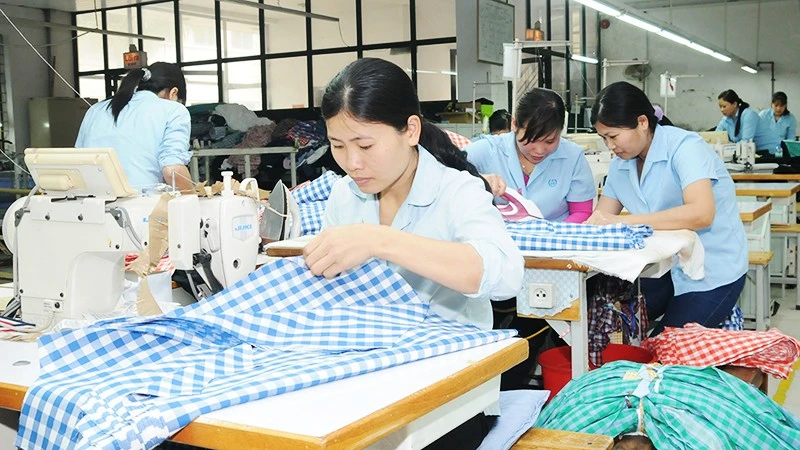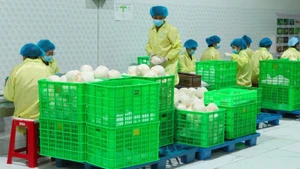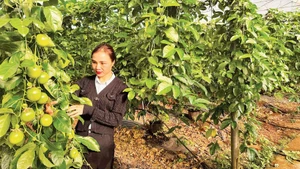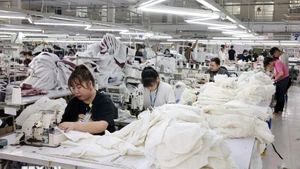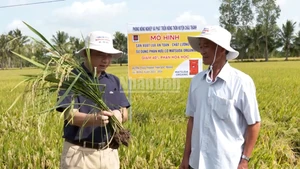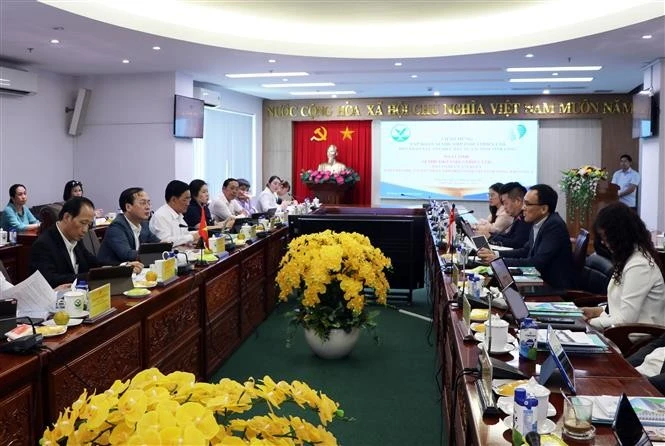Many good practices have opened up opportunities for the sector’s sustainable development in the coming time.
According to the Department of Livestock Production under the Ministry of Agriculture and Rural Development (MoARD), livestock production value was estimated to have increased by around 5% in 2020. Total pig production reached 26.17 million; the total number of cows was 5.87 million (an increase of 4.2%); and total poultry was about 496 million (up 6.2%). The output of live hogs, live poultry meat and eggs reached around 3.46 million tonnes (up 3.9%), 1.42 million tonnes (up around 9.2%) and 14.5 billion tonnes (up 9.5%), respectively.
In particular, the export turnover of livestock products (including pork, poultry, eggs, honey, and milk) was estimated at about US$300 million. In particular, the export of processed chicken to Japan was quite stable. In December 2020, the CP Vietnam Livestock Joint Stock Company exported the first batch of processed chicken products to Hong Kong (China). In addition, several Vietnamese enterprises sent multiplier chicken eggs and salted eggs to the Republic of Korea, Singapore, Australia, Cambodia and Laos; chicken eggs to Myanmar; frozen suckling pigs and piglets to Hong Kong (China) and Malaysia; and honey to the US and the EU.
Acting Director of Department of Livestock Production Nguyen Xuan Duong said that livestock production basically achieved its set targets in 2020, maintaining a high growth rate, satisfying both domestic and export demands. Livestock production witnessed great developments both in quantity and quality, becoming a major commodity production industry and creating income for hundreds of farmers.
The above achievements are the results of coordination between many major groups and enterprises to develop a closed chain of effective production with biosafety and food safety in animal slaughter as well as many effective livestock models and good practice. The A-Z food chain by Hoang Long Livestock Cooperative in Tan Uoc commune, Thanh Oai district, Hanoi, is one example, with a total of 500 sows and 5,000 multiplier pigs. Since 2016, the cooperative has invested in a closed chain model of breed production, animal feed, slaughtering and processing with a capacity of 150 animals per day, providing 13 A-Z processed products such as pork pies, sausages and bacon, meeting market demand. Many commentators have said that the livestock sector has made a great contribution to social security and the implementation of the goals of national industrialisation and modernisation. The sector has also restructured its production quite effectively in accordance with linking value chains and commodities, including the enterprises - livestock processing farms and enterprises – cooperative – farmers’ households chains. Accordingly, the sustainable development of livestock towards organic and biosafety standards will be prioritised, focusing on the stages of slaughter, processing and consumption.
In addition to these achievements, the livestock sector still has shortcomings such as unsustainable growth, especially in disease control, food safety, environment and product market. The sector alsos face many challenges in the context of deep international integration. Especially following the signing of free trade agreements, domestic livestock products will have to compete more fiercely with products of the same type from foreign countries with better qualifications and experience than Vietnam. On the other hand, Vietnamese experts and the relevant agencies do not yet fully appreciate the important role of market factors for the development of the pork industry and land-related issues for grazing spaces of buffalo and beef breeding. Breeders still lack land the funds for investment in and development of farms.
On October 6, 2020, the Prime Minister approved the Livestock Development Strategy for the 2021-2030 period, with a vision to 2045, under Decision No.1520/QD-TTg. The content and objectives of the strategy are in line with the provisions of the Law on Livestock Production and relevant legal documents, meeting the requirements of a professional and modern orientation for the sustainable development of the livestock industry. Accordingly, the industry’s restructuring will be enhanced and measures to promote re-herding and the transfer of herd structure will be promoted towards an increase in the proportion of poultry and big cattle.
The strategy also stresses the reorganisation of the domestic consumption market for livestock products to reduce intermediaries in the circulation process as well as the expansion of the trading floors for livestock products and the enhancement of deep processing to diversify product ranges. The relevant agencies will pay great attention to developing livestock according to farm scale and maintaining farm household husbandry under the traditional organic form and VIETGAP standards. The closed production and linkage model amongst all stages in the value chain will be encouraged to reduce cost and improve efficiency and added value.
The sector will continue to develop high-quality livestock breeds for production, with priority given to the import of appropriate breeds that are suitable for each ecological region. The production of industrial animal feed will be accelerated to meet domestic demand and exports. The relevant agencies should enhance the management and improve the efficiency of animal feed use to reduce production costs, ensure food safety and protect the environment. It is also crucial to disseminate methods of using animal feed safely and effectively among farming households. Hi-tech applications are needed in the field of livestock breeds, with priority given to indigenous breeds; animal feed, breeding conditions, equipment and facilities and veterinary hygiene. The synchronous measures are expected to turn livestock into a conditional production and business industry, ensuring biosafety, food safety, environmental protection and high economic value.
| In 2021, the livestock industry strives to achieve an average production value of about 5.5% to 6%. The quantity of meat of all kinds is expected to reach over 5.7 million tonnes, including 3.67 million tonnes of pork (up 6.1%), 1.5 million tonnes of poultry meat (up 5.8%) and 547,300 tonnes of grass-eating cattle meat (up 7.9%). Egg production is expected to reach 15.6 billion tonnes (up 7.5%) and milk production will increase by 11.5% to around 1.21 million tonnes. |

